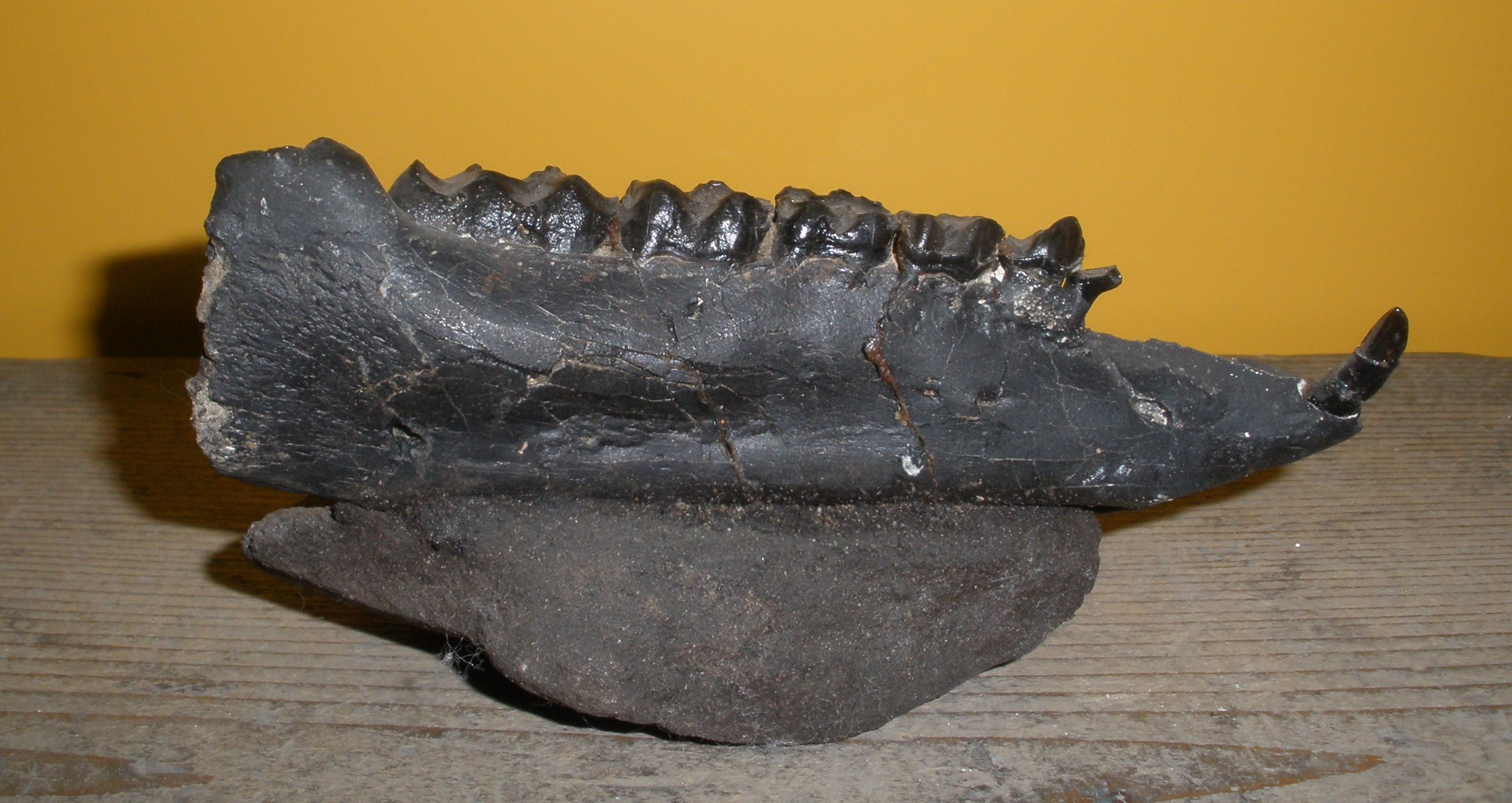Palaeothere on:
[Wikipedia]
[Google]
[Amazon]
Palaeotheriidae is an

 Palaeothere sizes ranged from at the shoulder, and weighed an estimated .S. Legendre. 1988. Les communautes de mammiferes du Paleogene (Eocene superieur et Oligocene) d'Europe occidentale: structure, milieux et evolution. Ph.D. thesis, Universite des Sciences et Techniques du Languedoc, Montpellier, France. 2 volumes. 1-265
Palaeothere sizes ranged from at the shoulder, and weighed an estimated .S. Legendre. 1988. Les communautes de mammiferes du Paleogene (Eocene superieur et Oligocene) d'Europe occidentale: structure, milieux et evolution. Ph.D. thesis, Universite des Sciences et Techniques du Languedoc, Montpellier, France. 2 volumes. 1-265
extinct
Extinction is the termination of a kind of organism or of a group of kinds (taxon), usually a species. The moment of extinction is generally considered to be the death of the last individual of the species, although the capacity to breed and ...
family of herbivorous perissodactyl mammals related to equid
Equidae (sometimes known as the horse family) is the taxonomic family of horses and related animals, including the extant horses, asses, and zebras, and many other species known only from fossils. All extant species are in the genus '' Equus'', w ...
s. They ranged across Europe and Asia from the Eocene through to the early Oligocene
The Oligocene ( ) is a geologic epoch of the Paleogene Period and extends from about 33.9 million to 23 million years before the present ( to ). As with other older geologic periods, the rock beds that define the epoch are well identified but the ...
55–33 Ma, existing for approximately .
Living in dense forests, they ate soft leaves, shoots, berries, and leaf matter picked up from the forest floor.
Morphology
Extinction
Evidence suggests that the palaeotheriidae went extinct in Eurasia during the Early Oligocene, approximately 33 Ma, as part of a faunal turnover event known as the Grande Coupure. The Eocene-Oligocene transition marked a significant global cooling event caused by the onset of Antarctic glaciation. This resulted in drier and more open habitats dominating the early Oligocene, and the loss of the dense forests that characterised the Eocene epoch. This environmental change, coupled with the arrival of new and better-adapted mammalian groups from Asia, triggered a decline in endemic European mammals such as the Palaeotheriidae and Anoplotheridae. In the Hampshire Basin of southern England the last record of the paleotheriidae is from the Lower Hamstead Mbr. of the Bouldnor Formation, dating to approximately 33.6 Ma.Fossil distribution
* Creechbarrow Hill Site, Dorset, England * Geiseltal, Mittelkohle, Zone III, Saxony-Anhalt, Germany *Egerkingen, Alpha & Beta fissures,Baselland
Basel-Landschaft or Basel-Country informally known as Baselland or Baselbiet (; german: Kanton Basel-Landschaft ; rm, Chantun Basilea-Champagna; french: Canton de Bâle-Campagne; it, Canton Basilea Campagna), is one of the 26 cantons forming ...
, Switzerland
). Swiss law does not designate a ''capital'' as such, but the federal parliament and government are installed in Bern, while other federal institutions, such as the federal courts, are in other cities (Bellinzona, Lausanne, Luzern, Neuchâtel ...
*La Debruge, Provence-Alpes-Côte d'Azur Region, France
*The Caucasus Mountains in Georgia
See also
* Evolution of the horseReferences
Prehistoric horses Eocene first appearances Oligocene extinctions Prehistoric mammal families {{paleo-oddtoedungulate-stub